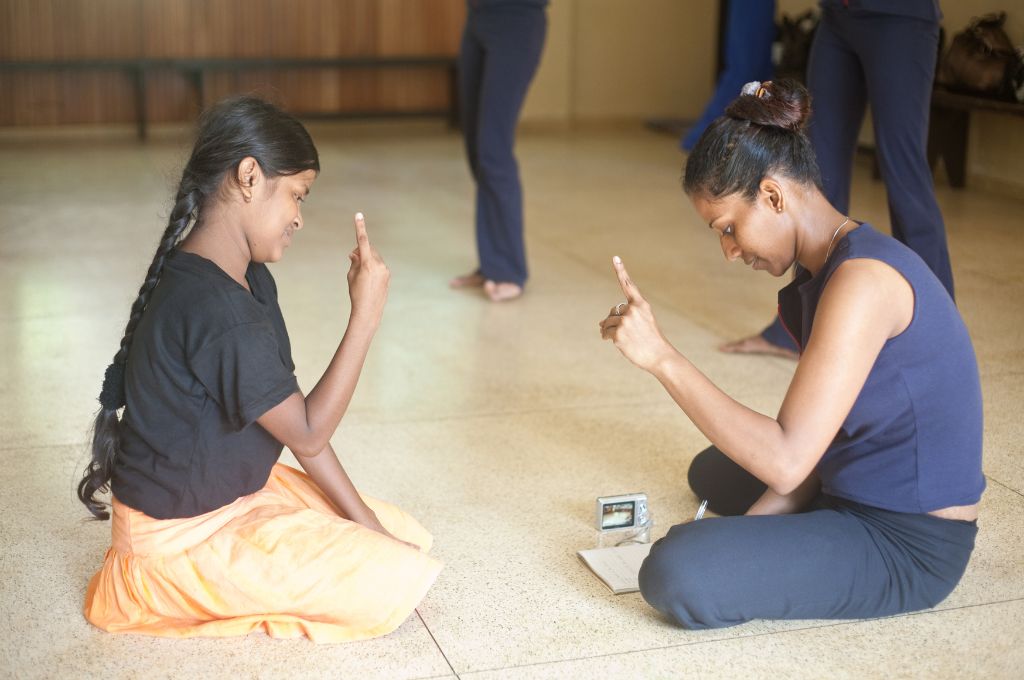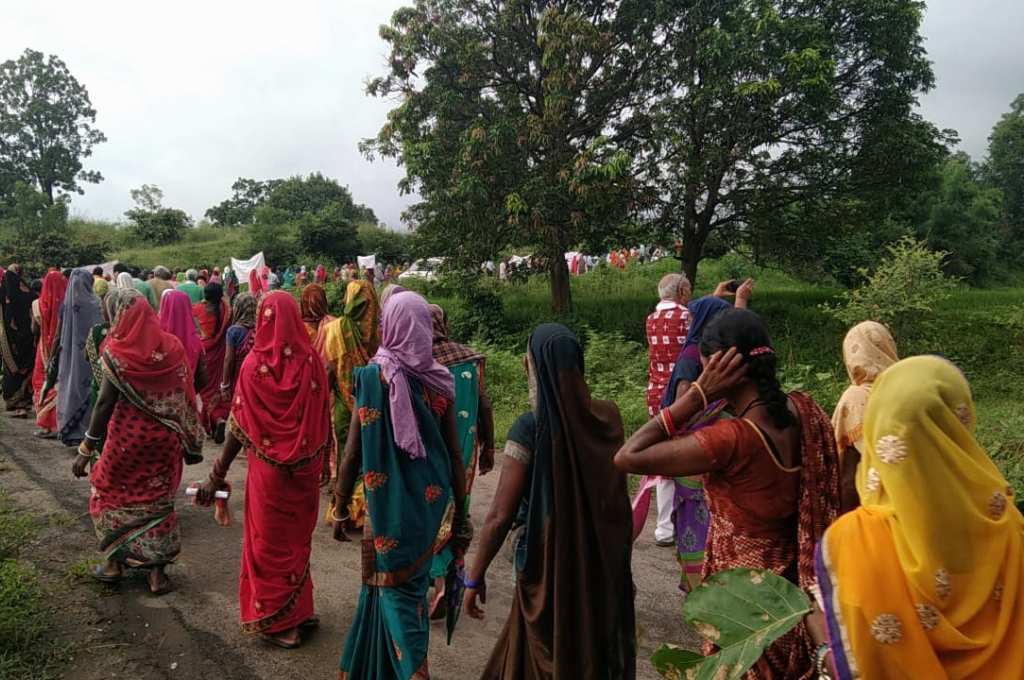2016 पर्यंत, भारतातील प्रचलित विकलांगत्व कायदा म्हणजे विकलांगत्व असलेल्या व्यक्ती कायदा, 1995 हा होता. हा कायदा विकलांग व्यक्तींना जीवनाच्या सर्व क्षेत्रात सहभागी होण्याची समान संधी देण्यासाठी लागू करण्यात आला होता. शिक्षण आणि रोजगाराच्या क्षेत्रात सकारात्मक कृती आणि भेदभाव न करण्याच्या तरतुदी त्याने स्थापित केल्या, प्रतिबंधात्मक उपाय म्हणून विकलांगत्वासाठी नियमित तपासणी सुरू केली आणि विकलांगत्व धोरणांच्या अंमलबजावणीसाठी केंद्र आणि राज्य पातळीवर संस्था स्थापन केल्या.
भारताने 2007 मध्ये विकलांग व्यक्तींच्या हक्कांवरील संयुक्त राष्ट्रांच्या कराराला मान्यता दिली. या कराराशी सुसंगत विकलांगत्व कायदा आणण्यासाठी, 1995 चा कायदा विकलांग व्यक्तींच्या हक्कांवरील कायदा (RPwD) 2016 बदलण्यात आला.
हा कायदा विकलांगत्वाची कायदेशीर व्याख्या वाढवून या कायद्याअंतर्गत अधिक विकलांग व्यक्तींचा समावेश करण्यास प्रोत्साहन द. 1995 च्या कायद्यानुसार, विकलांगत्वामध्ये – “अंधत्व, कमी दृष्टी, कुष्ठरोगाने बरे झालेले, श्रवणदोष, हालचाल अक्षमता, मानसिक असंतुलन आणि मानसिक आजार यांचा समावेश होता”. 2016 चा कायदा 21 प्रकारच्या विकलांगत्वांना मान्यता देतो, यात जुन्या कायद्यात सूचीबद्ध केलेल्या सर्व विकलांगत्वांचा समावेश आहे. त्या शिवाय, ऍसिड हल्ल्यातील पीडितांना हालचाल अक्षमता असलेल्या व्यक्ती म्हणून मान्यता दिली आहे. या कायद्यात बौद्धिक विकलांगत्वाची अधिक सूक्ष्म दखल घेतली गेली आहे. आता शिकण्याची असक्षमता आणि ऑटिझम स्पेक्ट्रम डिसऑर्डर यांची एक श्रेणी तयार केली आहे. शिवाय, दीर्घकालीन परिस्थितींमुळे होणाऱ्या- मल्टीपल स्क्लेरोसिस आणि पार्किन्सनसारखे न्यूरोलॉजिकल रोग आणि हिमोफिलिया, थॅलेसेमिया आणि सिकलसेल रोग यासारखे रक्ताचे विकार यांचा विकलांगत्वाचा कायद्यात उल्लेख करण्यात आला आहे. हा कायदा मूकबधिर लोकांसारख्या अनेक विकलांगत्व असलेल्या व्यक्तींना देखील सामावून घेतो.
RPwD कायद्यांतर्गत काही हक्क फक्त बेंचमार्क विकलांगत्व असलेल्या व्यक्तींना लागू होतात, ज्यामध्ये “निर्दिष्ट विकलांगत्वाचे प्रमाण 40 टक्क्यांपेक्षा कमी नसलेल्या” व्यक्तींचा समावेश होतो. रुग्णालय किंवा राज्य- किंवा जिल्हा-स्तरीय वैद्यकीय मंडळ किंवा विकलांगत्व असलेल्या व्यक्तींना प्रमाणित करणाऱ्या प्राधिकरणाद्वारे बेंचमार्क विकलांगत्व असलेल्या व्यक्ती प्रमाणपत्र मिळवू शकतात.
RPwD कायद्याद्वारे काय हमी दिली जाते?
शिक्षण, कौशल्य विकास व रोजगार, आरोग्यसेवा व भत्ते, आणि मनोरंजन व सांस्कृतिक जीवनासंदर्भात या कायद्याने केलेल्या काही तरतुदी येथे दिल्या आहेत.
शिक्षण
प्रकरण 3 नुसार, सरकारकडून निधी मिळवणाऱ्या शैक्षणिक संस्थांनी त्यांचे कॅम्पस विकलांग व्यक्तींसाठी सुलभ बनवावेत आणि त्यांना आवश्यक असलेल्या सुविधा पुरवाव्यात. विकलांग व्यक्तींचा जास्तीत जास्त शैक्षणिक आणि सामाजिक विकास व्हावा व त्यांचा पूर्ण समावेश व्हावा या उद्देशाने हे केले आहे. या कायद्यात मुलांमध्ये असलेल्या शिकण्याच्या अक्षमतेचा लवकरात लवकर शोध घेणे आणि शिकण्याच्या आणि विकासाच्या अक्षमता असलेल्या मुलांना वर्गात समाविष्ट करण्यासाठी योग्य पावले उचलणे देखील बंधनकारक आहे.
या कायद्यानुसार, स्थानिक सरकार – पंचायत किंवा नगरपालिका – यांनी दर पाच वर्षांनी विकलांग मुलांची ओळख पटविण्यासाठी सर्वेक्षण करावे. या डेटाच्या आधारे पुरेशा संख्येने शिक्षक व प्रशिक्षण संस्था स्थापन करण्यास मदत होईल. वर्गखोली अधिक समावेशक बनवण्यासाठी, हा कायदा बौद्धिक विकलांग मुलांसोबत काम करण्यासाठी प्रशिक्षित शिक्षक, आणि ब्रेल आणि सांकेतिक भाषा अवगत असलेले शिक्षक नियुक्त करण्याची सूचना देखील देतो. याव्यतिरिक्त, हा कायदा सांकेतिक भाषा आणि ब्रेल सारख्या संवादाच्या पर्यायी पद्धतींचा वापर करण्यास प्रोत्साहित करतो, जेणेकरून भाषण, संवाद किंवा भाषेशी संबंधित विकलांगत्व असलेले लोक सहभागी होऊ शकतील.
प्रकरण 6 मध्ये बेंचमार्क विकलांगत्व असलेल्या मुलांसाठी काही तरतुदी आहेत: कोणत्याही सरकारी शाळेत किंवा विशेष शाळेत 18 वर्षांपर्यंत मोफत शिक्षण, मोफत शिक्षण साहित्य व शिष्यवृत्ती, उच्च शिक्षणासाठी सरकारी संस्थांमध्ये बेंचमार्क विकलांगत्व असलेल्या विद्यार्थ्यांसाठी किमान 5 टक्के जागा राखीव ठेवणे, तसेच उच्च वयोमर्यादेत पाच वर्षांची सूट देणे इ. या कायद्यात विकलांगत्व असलेल्या विद्यार्थ्यांना शिष्यवृत्ती देण्याची शिफारस देखील केली आहे.
कौशल्य विकास आणि रोजगार
या कायद्याच्या प्रकरण 4 मध्ये विकलांग व्यक्ती कौशल्य विकास आणि रोजगाराच्या बाबतीत कसे काम करत आहेत याची माहिती ठेवणे अनिवार्य केले आहे. त्यात असे म्हटले आहे की बहुविध विकलांगत्व किंवा बौद्धिक आणि विकासात्मक विकलांगत्व असलेल्यांसाठी, बाजारपेठेशी सक्रिय संबंध असलेले विशेष कौशल्य प्रशिक्षण कार्यक्रम विकसित केले पाहिजेत. शिवाय, यात असे नमूद केले आहे की विकलांग व्यक्ती व्यावसायिक अभ्यासक्रम किंवा स्वयंरोजगार घेऊ शकतील यासाठी कर्ज उपलब्ध करून दिले पाहिजेत. उदाहरणार्थ, गोव्यातील एक राज्य सरकारची योजना पारंपारिक व्यवसाय आणि व्यवसायांमध्ये गुंतलेल्यांना मासिक आर्थिक मदत प्रदान करते.
शिक्षणाप्रमाणेच, रोजगाराबाबत या कायद्याने जे निर्देश दिले आहेत ते बहुतेक सरकारी नोकऱ्यांना लागू होतात. कलम 20 रोजगारात भेदभाव न करण्याची तरतूद करते. सरकारी कार्यालयांनी विकलांग व्यक्तींना वाजवी निवास व्यवस्था आणि अडथळामुक्त वातावरण प्रदान करणे अपेक्षित आहे जेणेकरून त्यांच्या जबाबदाऱ्या ते प्रभावीपणे पार पाडू शकतील. जर एखादा सरकारी कर्मचारी त्याचा कार्यकाळ संपण्यापूर्वी विकलांग झाला, तर या कलमाप्रमाणे, त्याला पदावनत करण्याची किंवा काढून टाकण्याची आवश्यकता नाही परंतु त्याला त्याच वेतनश्रेणीवर दुसऱ्या भूमिकेत हलवता येते.
कलम 21 मध्ये असे म्हटले आहे की प्रत्येक सरकारी आस्थापनेमध्ये सर्वांना समान संधी धोरण हे धोरण राबवले जाईल. अधिक जबाबदारी सुनिश्चित करण्यासाठी, कलम 22 मध्ये रोजगाराशी संबंधित सर्व बाबींचे रेकॉर्ड ठेवणे अनिवार्य आहे, ज्यामध्ये रोजगार शोधणाऱ्या विकलांग व्यक्तींबद्दलच्या माहितीचे दस्तऐवजीकरण करणे समाविष्ट आहे. या नोंदी कधीही तपासल्या जाऊ शकतात.
प्रकरण 6 मधील कलम 33 नुसार, कोणत्याही सरकारी पदांसाठी 4 टक्के पर्यंतची पदे बेंचमार्क विकलांगत्व असलेल्या अर्जदारांसाठी राखीव ठेवली पाहिजेत. खाजगी कंपन्यांना यासाठी प्रोत्साहन दिले पाहिजे असे कायद्यात नमूद केले असले तरी, ते प्रोत्साहन काय असावे हे स्पष्टपणे सांगितलेले नाही. याव्यतिरिक्त, सरकारी इमारतींचे आराखडे विकलांगत्वासाठी अनुकूल असतील तरच मंजूर केले पाहिजेत. या कायद्यात पाच वर्षांचा कालावधी देखील निर्दिष्ट केला आहे ज्यामध्ये सर्व विद्यमान सरकारी इमारतींचे विकलांगत्वासाठी अनुकूल पायाभूत सुविधांनी नूतनीकरण करायचे आहे.

आरोग्यसेवा आणि भत्ते
प्रकरण 5 मध्ये आरोग्यसेवेशी संबंधित काही तरतूदी सूचीबद्ध केल्या आहेत. यामध्ये विकलांग व्यक्तींच्या परिसरात मोफत आरोग्यसेवा, सरकारी व खाजगी रुग्णालये/आरोग्य केंद्रांच्या सर्व भागांमध्ये त्यांना अडथळामुक्त प्रवेश आणि प्राधान्याने त्यांची दखल घेउन उपचार करणे यांचा समावेश आहे. त्यात असे नमूद केले आहे की आरोग्यसेवेला प्रोत्साहन देण्यासाठी आणि विकलांगत्वाच्या घटना रोखण्यासाठी योजना असाव्यात. याचे एक प्रासंगिक उदाहरण म्हणजे भारत सरकारने 2021 मध्ये मलेरिया, हत्तीरोग (लिम्फॅटिक फायलेरियासिस) आणि काळा आजार दूर करण्यासाठी सुरू केलेला देशव्यापी रोग निर्मूलन कार्यक्रम.
विकलांगत्व रोखण्यासाठी इतर उपायांची देखील शिफारस केली आहे – विकलांगत्वाच्या घटनांबाबत सर्वेक्षण, तपासणी आणि संशोधन करणे आणि जोखीम असलेली प्रकरणे शोधण्यासाठी मुलांची वार्षिक तपासणी आयोजित करणे. हा कायदा आरोग्य केंद्रे, प्राथमिक शाळा, अंगणवाड्या इत्यादींना एकत्रित जनजागृती मोहिमा राबविण्याचे निर्देश देतो. या कायद्यात असे नमूद केले आहे की खालच्या उत्पन्न गटातील व्यक्तींना वैद्यकीय मदत व उपकरणे आणि सुधारात्मक शस्त्रक्रिया मोफत दिल्या जाव्यात. दिल्ली आणि पंजाबसारख्या काही राज्यांनी अशा योजना सुरू केल्या आहेत ज्या बेंचमार्क विकलांगत्व असलेल्या व्यक्तींना सहाय्यक उपकरणे मिळविण्यास मदत करतात. जास्त आधाराची गरज असलेल्यांसाठी विकलांगत्व पेन्शन आणि काळजीवाहू भत्ता यांची देखील तरतूद केली आहे. विकलांगत्वासह जगण्यासाठी येणाऱ्या अतिरिक्त खर्चाची जाणीव ठेवून, सामाजिक सुरक्षा योजनांअंतर्गत विकलांगत्व असलेल्या व्यक्ती इतरांपेक्षा 25 टक्के जास्त भत्ता मिळवण्यास पात्र आहेत.
मनोरंजन आणि सांस्कृतिक जीवन
विकलांग व्यक्तींना योग्य ते राहणीमान आणि सांस्कृतिक जीवन मिळावे हा त्यांचा अधिकार आहे, हे ओळखून, प्रकरण 5 च्या कलम 29 मध्ये असे म्हटले आहे की त्यांना मनोरंजनात्मक उपक्रम उपलब्ध करून दिले पाहिजेत. त्यात काही तरतुदी आहेत, जसे की विकलांगत्वा च्या इतिहासाचे संग्रहालय करणे, विकलांग कलाकारांसाठी अनुदान आणि प्रायोजकत्व उपलब्ध करणे, विकलांग लोकांसाठी कला शिकणे सुलभ करणे, सहाय्यक तंत्रज्ञानाचा वापर करणे आणि विकलांग व्यक्ती देखील सहभागी होऊ शकतील अशा कला शाखेच्या अभ्यासक्रमाची पुनर्रचना करणे.
सरकारची कर्तव्ये काय आहेत?
1. विकलांग व्यक्तींची माहिती गोळा करणे
या कायद्यात विकलांगत्वासाठी डेटा-केंद्रित दृष्टिकोन आहे, जो वेगवेगळ्या एजन्सींद्वारे डेटा संकलनाच्या अटींवरून दिसून येतो. उदाहरणार्थ, स्थानिक सरकारे, सरकारी कार्यालये आणि आरोग्य सेवा अधिकाऱ्यांद्वारे डेटा संकलन करण्या व्यतिरिक्त, हा कायदा राष्ट्रीय आपत्ती व्यवस्थापन प्राधिकरणाला (NDMA) विकलांग व्यक्तींची नोंद ठेवण्याचे निर्देश देतो जेणेकरून आपत्कालीन परिस्थितीत त्यांच्यासाठी सुरक्षा उपायांची उपलब्धता सुनिश्चित करता येईल. NDMA ने विकलांग व्यक्तींना उपलब्ध असलेल्या स्वरूपात माहिती प्रसारित करणे देखील अपेक्षित आहे आणि पुनर्बांधणी उपक्रमांचे नियोजन करताना त्यांच्या गरजा देखील लक्षात घ्याव्यात असे म्हटले आहे.
2. प्रवेशयोग्यता आणि समावेश निश्चित करणे
या कायद्यात शाळा, सरकारी कार्यालये, प्राथमिक आरोग्य केंद्रे आणि सार्वजनिक वाहतूक यासह सर्व सार्वजनिक जागा सर्वांसाठी सुलभ बनवण्याची तरतूद आहे. मतदान केंद्रे आणि कोणत्याही सरकारी कागदपत्रे किंवा प्रकाशनांची उपलब्धता सुनिश्चित करणे तसेच न्यायाची उपलब्धता सुधारणे देखील बंधनकारक आहे, ज्यामध्ये विकलांग व्यक्तींच्या साक्षीची नोंद करणे सुलभ होणे यांचा समावेष आहे.
3. अधिकारी, सल्लागार- संस्था आणि विशेष न्यायालये नियुक्त करणे
या कायद्याचे पालन सुनिश्चित करण्यासाठी अनेक सरकारी पदे स्थापन करण्याची आवश्यकता आहे. उदाहरणार्थ, प्रत्येक सार्वजनिक संस्थेत तक्रार निवारण अधिकारी असणे आवश्यक आहे आणि ज्या व्यक्तीला पदासाठी अर्ज करताना भेदभाव होत असल्याचे वाटत असेल ती व्यक्ती या कार्यालयामार्फत तक्रार दाखल करू शकते. जर हे देखील असमाधानकारक वाटले तर व्यक्ती जिल्हास्तरीय विकलांगत्व समितीकडे तक्रार करू शकतात.
विकलांगत्वावरील केंद्रीय सल्लागार मंडळ आणि विकलांगत्वावरील राज्य सल्लागार मंडळे देखील स्थापन करण्यात आली आहेत. या मंडळांचे सदस्य केंद्रीय आणि राज्य पातळीवरील विकलांगत्वांशी संबंधित मंत्रालये आणि विभाग, आरोग्य आणि शिक्षण यासह अनेक विभागांचे सह सचिव आणि तज्ञ आहेत – यांतील काही सदस्य विकलांग, महिला आणि अनुसूचित जाती किंवा जमाती समुदायातील असावेत. वेगवेगळ्या धोरणांमध्ये विकलांगत्व कायद्याचा हेतू किती जपला जात आहे याचा आढावा घेण्यासाठी या संस्था दर सहा महिन्यांनी भेटतात.
या कायद्यात विकलांग व्यक्तींसाठी मुख्य आयुक्त आणि राज्य आयुक्तांची (ज्यांना तक्रार निवारण अधिकारी अहवाल देतात) नियुक्ती करण्याची तरतूद आहे. या आयुक्तांना दिवाणी न्यायालयासारखे अधिकार दिले आहेत. त्यांनी संशोधनाला चालना दिली पाहिजे आणि विद्यमान कायदे आणि तरतुदी विकलांग व्यक्तींसाठी उपयुक्त आहेत का ते पहावे आणि जर त्या उपयुक्त नसतील तर शिफारसी कराव्यात असे अपेक्षित आहे. मुख्य किंवा राज्य आयुक्तांनी केलेल्या कोणत्याही सूचनांवर तीन महिन्यांच्या आत कार्यवाही करावी.
या कायद्यात विकलांग व्यक्तींवरील गुन्ह्यांचा खटला चालवण्यासाठी एक विशेष न्यायालय स्थापन करण्याचे निर्देश दिले आहेत आणि त्यासाठी विशेष सरकारी वकिलांची नियुक्ती करण्याचे आवाहन केले आहे.
2016 चा कायदा कसा वेगळा आहे?
1995 आणि 2016 या दोन्ही कायद्यांमध्ये डेटा संकलन व रेकॉर्डकीपिंग, सुलभ शिक्षण, आरोग्यसेवा व रोजगार, आरक्षण व विकलांगत्व कायद्याची अंमलबजावणी करण्यासाठी विशेष सरकारी कार्यालये यासाठी तरतुदी आहेत. दोन्ही कायद्यांमध्ये नियमित तपासणी करणे आणि विकलांगत्व रोखण्यासाठी काही उपाययोजना करणे देखील आवश्यक आहे.
तथापि, 2016 चा कायदा काही बाबतीत वेगळा आहे.
1. हक्कांवर लक्ष केंद्रित करणे
हा कायदा केवळ विकलांग व्यक्तींना समावेश आणि प्रवेशयोग्यतेच्या अधिकारांची हमी देत नाही तर कला, संस्कृती आणि मनोरंजनात्मक उपक्रमांचा आनंद घेण्याचा, स्वतंत्रपणे किंवा समुदायासोबत राहण्याचा आणि स्वतःची काळजी कुणी घ्यावी हे निवडण्याचा अधिकार देखील देतो. विकलांग व्यक्तींना अधिक एजन्सींद्वारे सेवा देण्यासाठी या तरतुदी अस्तित्वात आहेत.
लिंग, वय आणि सामाजिक-आर्थिक पार्श्वभूमीच्या आधारावर विकलांग समुदायातील विविधतेची देखील हा कायदा दखल घेतो. शिवाय, विकलांगत्वाबाबत समज वाढविण्यासाठी आणि योग्य धोरणे बनवण्यासाठी संशोधन आणि डेटा संकलनावर खूप भर दिला जात असला तरी, कायद्यात स्पष्टपणे म्हटले आहे की कोणत्याही विकलांगत्व असलेल्या व्यक्तीला त्याच्या संमतीशिवाय संशोधन साठी वापरले जाणार नाही.
2. मूर्त तरतुदी आणि तक्रार निवारण यंत्रणा
1995 च्या कायद्यात सरकारी इमारतींना अडथळामुक्त करणे आणि नियमित तपासणी करणे यासह सुलभता आणि समावेशन यासंबंधी कलमे होती, तर 2016 च्या कायद्यात अशा उपक्रमांसाठी कालावधी निर्दिष्ट करून अधिक ठोस तरतुदी करण्यात आल्या आहेत.
1995 च्या कायद्यात कोणत्याही गुन्ह्यांसाठी स्पष्ट शिक्षा नव्हती आणि ती एखाद्या विशिष्ट प्रकरणाची देखरेख करणाऱ्या न्यायिक अधिकाऱ्यांच्या विवेकबुद्धीवर सोपवण्यात आली होती, परंतु 2016 च्या कायद्यात गुन्ह्यांसाठी कोणत्या प्रकारचे दंड आणि तुरुंगवास असावा हे स्पष्टपणे नमूद केले आहे. उदाहरणार्थ, या कायद्याअंतर्गत गुन्हेगाराला त्याच्या पहिल्या गुन्ह्यासाठी 10,000 रुपये दंड आकारला जाईल आणि त्यानंतरच्या गुन्ह्यांसाठी 50,000 ते 5 लाख रुपयांचा दंड आकारला जाईल असे नमूद केले आहे. या कायद्याअंतर्गत, फसवणूक करून फायदे घेतल्यास दंड आणि तुरुंगवास देखील होऊ शकतो.
सध्याची स्थिती
कायद्यानुसार इमारतींचे अद्ययावतीकरण करणे आवश्यक असले तरी, केंद्रीय सल्लागार मंडळाच्या अलिकडच्या बैठकीत असा निष्कर्ष काढण्यात आला की काही आघाड्यांवर प्रगती मंदावली आहे, जसे की विद्यमान इमारतींची पुनर्बांधणी. अर्थसंकल्पीय तरतूद देखील कमी आहे. त्याचप्रमाणे, विकलांग म्हणून ओळखले जाणे नेहमीच सरकारी योजनांमध्ये प्रवेश करण्यासाठी पुरेसे असते असे नाही. उदाहरणार्थ, जरी कायद्यानुसार ऍसिड हल्ल्यातील पीडितांना विकलांग म्हणून ओळखले जात असले तरी, विकलांगत्व प्रमाणपत्रे, रोजगार, विकलांगत्व समर्थन आणि अनुदाने मिळण्यातखूप अडचणी येतात. सरकारी अधिकारी देखील नेहमीच विकलांगत्व असलेल्या व्यक्तींच्या गरजांबद्दल संवेदनशील नसतात आणि विकलांगत्व पेन्शन अशा योजनांचे लाभार्थी असलेल्यांच्या गरजा पूर्ण करण्यात कमी पडतात.
मात्र, मोठ्या संख्येने अपंगांना समाविष्ट करणे हे समावेशाच्या दिशेने पहिले आवश्यक पाऊल आहे. आणि मोठ्या प्रमाणात शिक्षण आणि संवेदनशीलता निर्माण करण्यासाठी सतत प्रयत्न करावे लागतील, परंतु मुख्य आयुक्त, निवडणूक आयोग आणि मुंबई उच्च न्यायालयाच्या अलिकडच्या निर्णय आणि मार्गदर्शक तत्त्वांवरून असे दिसून येते की विकलांग व्यक्तींच्या समस्या आता अधिक गांभीर्याने बघितल्या जात आहेत.
मूळ इंग्रजीतील लेखाचा मराठी अनुवाद करताना ट्रांसलेशनटूलचा वापर केला आहे. सुशीलकुमार सडोलीकर यांनी अनुवादीत लेख तपासण्याचे व संपादनाचे काम केले आणि अंकिता भातखंडे यांनी याचे पुनरावलोकन केले आहे.
—
अधिक जाणून घ्या
- भारताचे विकलांग व्यक्तींबद्दलचे राष्ट्रीय धोरण येथे वाचा.
- परोपकारी क्षमतावाद विकलांग व्यक्तींना कसे नुकसान पोहोचवतो हे जाणून घेण्यासाठी हा लेख वाचा.
- 2016 च्या विकलांगत्व कायद्याने घालून दिलेल्या इमारतीच्या सुलभतेच्या निकषांची पूर्तता कशी होते आहे हे जाणून घेण्यासाठी हा लेख वाचा.
- विकलांग व्यक्तींना वृत्तीविषयक अडथळ्यांना कसे तोंड द्यावे लागते हे जाणून घेण्यासाठी हा लेख वाचा.






